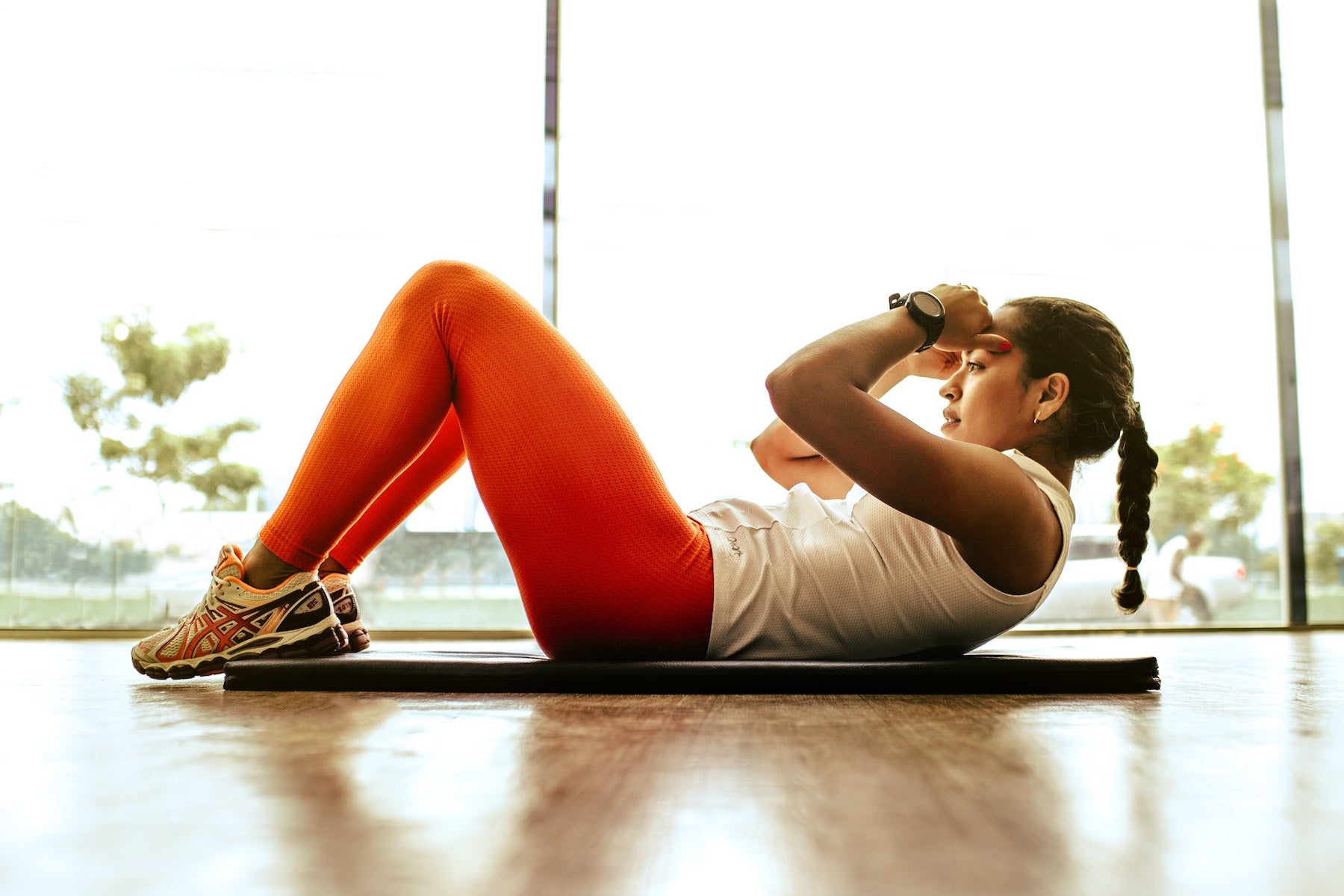
Switch Up Your Sit-Ups: How To Safely Add Weight
If you’re not feeling the burn with your ab workout anymore, it could be time for a change.
That’s because when your workout intensity hasn’t dropped off but you don’t feel the same struggle, you’re experiencing general adaptation syndrome.
One of the amazing parts about our body is how well it adapts to new situations. When it comes to exercise, however, that adaptation can end up feeling a little bit frustrating. When you start to exercise, you feel sore, then you get stronger. Soon, though, the same amount of exercise doesn’t bear the same results.
So, you’ve got to up the intensity. One way of upping intensity is to increase the number of repetitions. That can mean going from lifting a weight eight times to 10 times, for example.
For ab workouts, that might mean taking your bicycle crunches from 45 seconds to 60 seconds.
At a certain point, though, you may find adding more time or repetitions on the floor a bit tedious. After all, a minute and a half, two minutes, five minutes - it begins to add up.
The other way of upping the intensity?
Adding weight.
Given that most of us are used to just plopping down on the ground to crank out our planks and sit-ups, we wanted to take a moment to share some tips on the best ways to safely add weight to your sit-up routine.
4 Tips For Adding Weight During Your Ab Exercises
-
Not For Your First Day Back In The Gym - An important distinction between lifting weights and weighted sit-ups is who they’re for. A beginner can come to the gym to lift weights with their arms. That same beginner should not try weighted ab exercises. As Healthline points out, the core area connects your abdominal muscles with your back and spine, so to avoid injury make sure you’ve established a baseline of abdominal fitness before adding weights.
-
Treat Sit-Ups Like Bicep Curls - By adding weights, you can treat your weighted sit-ups like the other parts of your workout regimen. That means measuring in familiar sets and reps, like 3 and 8, 3 and 10, or 3 and 12. Then after you’re comfortable with the weight, increase it. Be sure to take notes of your workouts so you can measure those sweet gains!
-
Location, Location, Location - As in, the location of the dumbbell matters a lot. Though you may have seen people putting the weight on their stomach, all that does is squish your gut. Better form, according to Chron, includes putting the dumbbell on your chest or behind your head (while being careful not to pull or strain your neck to complete your set).
- Rest Day, Ab Day - With traditional ab exercises, you might be going for a set amount of time and a few sets. While it can certainly feel intense in the moment, you may not be working to the point of fatigue or exhaustion like you will be with these more weight-oriented workouts. To that end, more intense workouts means those muscles need some time to recover. Make Ab Day the new Leg Day, and be sure to take a day off between workouts.
Depending on your workout fitness goals, adding weights to your ab routines could help you get there.
What about you? Do you ever add dumbbells or medicine balls to your sit-ups?

